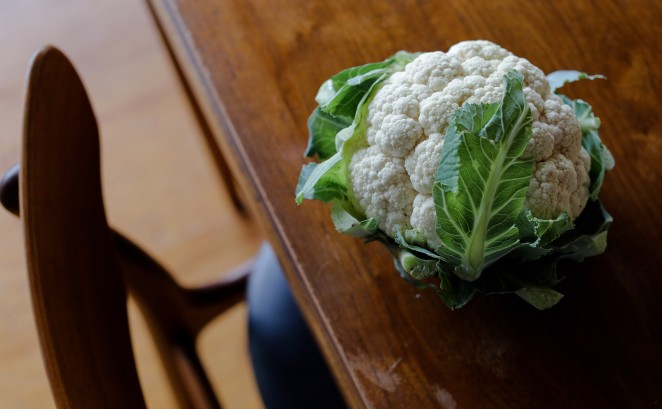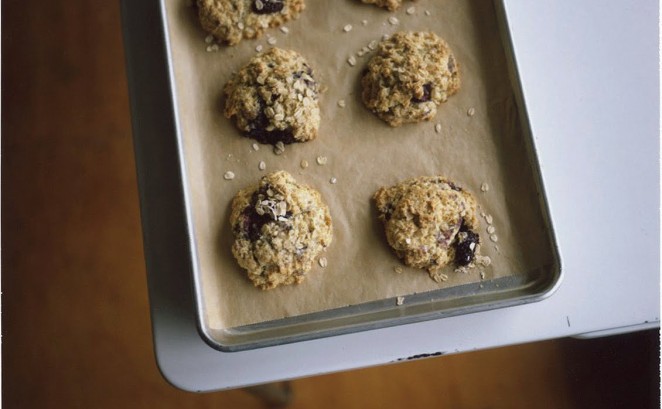Tag: bon appetit
Even on a good day
My mother has been in town since early this month. We don’t often get this kind of extended time in the same place, and I’d forgotten what a good cooking collaborator she is. She makes sure our wine glasses are never empty. She cleans up as she goes. She doesn’t mind deveining shrimp! I could go on and on. I bow down.
At my reading in Madison last week, someone asked me to talk about a few of my favorite cookbooks. The ones I mentioned were The Zuni Cafe Cookbook, All About Braising, various Nigel Slater titles, and Every Grain of Rice, and because I am long-winded, my answer wrapped up, blah dee blah blah, about twenty-five minutes later, on the topic of everyday cooking, which I usually do without consulting a book. In truth, I pointed out, I only cook two or three “real” dishes a week – and by “real,” which is a very arbitrary word, I mean things that involve more than 10 minutes in the kitchen. I only very, very rarely make more than one “real” dish at a time – say, this favorite Sichuanese beef-and-celery recipe plus a side of braised bok choy. Usually, even on a good day, it’s just the beef and celery, with some rice from the electric rice cooker. I can’t remember the last time I made a meal that involved three different, recipe-based dishes on a plate. Most of the time, my home cooking is very simple and quick: scrambled eggs and a salad dressed in the vinaigrette I always keep in the fridge, a bowl of soup with some cheese and bread or crackers, or rice topped with whatever’s in the crisper drawer and a fried egg and hot sauce.
Later, when I was sitting at a table, signing books, someone expressed surprise that I “cook” so little – that, for someone who professes to love cooking, that I don’t actually do a lot of it. I sort of bumbled through an answer, and a week later, in the wake of much online discussion about domesticity, feminism, and the joys and headaches of home cooking, I’m still thinking about how to explain my thinking. But I think what it comes down to is this: maybe we’re setting our standards too high for what it means to cook at home, to do home cooking? I mean, I love to cook, but I also believe it is totally okay – even good, even great, even elegant – to serve scrambled eggs for dinner. I have no qualms about feeding myself, my child, and my husband (and even company) a pot of vegetable soup that I made earlier this week, with some cheddar and purchased bread. I love to cook, but like everybody, my life is full. I’m tired at night. I hate deveining shrimp. I love to cook, but I love to cook two or three times a week, and not much more than that. The rest of the time, we eat leftovers, or we eat something that I (or we) can make in a few minutes. It’s still home cooking, and we’re still eating good food, and there’s real pleasure in that. That’s what I care about.
This soup is one that I’ve made probably a half-dozen times, adapted from a recipe that I found last year in Bon Appetit. You’ve got to peel and chop the bag of carrots, but after that, the soup coasts to the finish line by itself, and a single batch will cover a week’s worth of lunches or a couple of dinners for a small family. The photos I took of it were sort of lackluster, but you can picture it. The soup is anything but. It’s pumpkin-orange and velvety, laced with a creeping heat that leaves your mouth tingling. I like it with sharp cheddar and a pile of Triscuits.
Happy weekend.
Carrot-Coconut Soup with Chile and Lime
Adapted from Bon Appetit and the Clayburn Village Store & Tea Shop in Abbotsford, BC
Melt the butter in a large (5-quart) pot over medium-high heat. Add the carrots and onion, season with a couple good pinches of salt, and cook, stirring often, until the carrots are softened, 15-20 minutes. Stir in the broth, 1 ½ cans of the coconut milk, and 1 tablespoon of the sriracha. Bring to a simmer, and cook, stirring occasionally, until the vegetables are very soft and the liquid is slightly reduced, about 45 minutes. Puree in small batches (remember: hot liquids expand!) in a blender. (Or, my preference: puree right in the pot, with an immersion blender.) Check for seasoning, and add more salt and/or sriracha, if you like. (I usually add 1 more tablespoon sriracha.) If you’d like more richness, stir in the rest of the coconut milk, and then reheat as needed.
Serve with a generous squeeze of lime in each bowl, and top with cilantro, if you have it.
Yield: 6 to 8 servings
Call it a meal

We have reached the point in winter, or spring, or whatever it is, when even I am tired of making, eating, and talking about soup. I’ve been meaning to make a batch of vegetable and pearl barley soup for the past week, and I even forced myself to chop up everything the other night before bed, thinking it would inspire me to get on it the next morning, but, eh. Eh. I’d rather do what I did twice last week: throw a cauliflower in the oven, eat the whole pan, and call it a meal. Roasted cauliflower! Old news! You know how to roast cauliflower. I know how to roast cauliflower. But here I am, talking up roasted cauliflower, because this particular…
Read moreIt still surprises me

So. I think it would be fair to say that your comments on my last post made me very, very happy. It feels much less lonely in here, and I have you to thank for that. More than anything, I just love that we can talk about this kind of stuff. When I first started writing here, more than seven(!) years ago now, I had no idea where this weird blog thing of mine would go. It still surprises me. I’m glad you’re here, and I’m glad I am, too. It also surprises me how many totally so-so recipes I tried last week. Absolutely nothing worth telling you about. So-so chicken, so-so apricots, so-so beans. And then, while I was…
Read more



